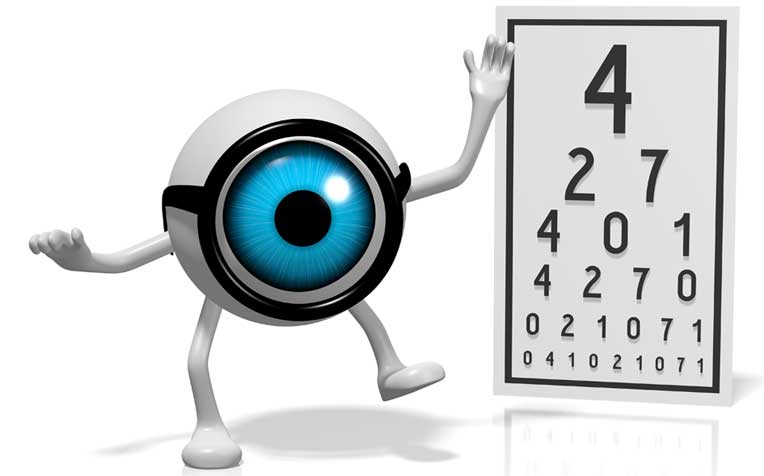
The truth is that that LASIK treatment can be customised to your level of correction.
It is one of the wonders of modern medicine and technology – the ability to improve vision and do away with spectacles or contact lenses. Whether for aesthetics or practical reasons, LASIK has gained popularity over recent years. But questions and myths over this procedure still abound.
Let the
Refractive Surgery Department from Singapore National Eye Centre (SNEC), a member of the
SingHealth group, lay to rest some of the top misconceptions.
Considering LASIK? Watch May's LASIK journey in the video below!
 Myth 1: LASIK is done using a computer programme and can be performed just as well by any clinic so the main consideration is price.
Myth 1: LASIK is done using a computer programme and can be performed just as well by any clinic so the main consideration is price.
![]() Fact: There are many factors to consider other than price. These include the reputation of the centre and its audit system, the ability to ensure personalised reviews by the surgeons and the range of treatment options offered.
Fact: There are many factors to consider other than price. These include the reputation of the centre and its audit system, the ability to ensure personalised reviews by the surgeons and the range of treatment options offered.
As with any surgery – and LASIK is considered surgery – a surgeon’s skill and the level of care the centre offers is essential. The laser is only one of the tools that the surgeon uses to perform the procedure. The surgeon must also create and manipulate the corneal flap, a delicate surgical procedure that requires experience and skill.
 Myth 2: Everyone is suitable for LASIK.
Myth 2: Everyone is suitable for LASIK.
![]() Fact: Not everyone is suitable for LASIK, those with thin corneas relative to the degree of improvement they want to achieve are not suitable for LASIK. People in certain jobs may also find LASIK unsuitable. Generally only a small number of people (about 10% or less) may be unsuitable.
Fact: Not everyone is suitable for LASIK, those with thin corneas relative to the degree of improvement they want to achieve are not suitable for LASIK. People in certain jobs may also find LASIK unsuitable. Generally only a small number of people (about 10% or less) may be unsuitable.
However, there are many other refractive surgery options available and a reputable centre will be able to give advice on these other procedures. Thus, it is advantageous to go to a centre with a wide range of refractive surgery options and experience.
 Myth 3: LASIK cannot be individualised.
Myth 3: LASIK cannot be individualised.
![]() Fact: LASIK can be tailored to an individual’s eye and requirements. Newer technology also means that treatments can be even more customised to a patient’s need and level of correction. Your surgeon will be able to advise on the most suitable treatment for you.
Fact: LASIK can be tailored to an individual’s eye and requirements. Newer technology also means that treatments can be even more customised to a patient’s need and level of correction. Your surgeon will be able to advise on the most suitable treatment for you.
New LASIK programmes are also much more accurate and able to treat higher degree levels. In the past, the higher the degree a person had, the more cornea had to be removed, but LASIK technology now removes less tissue allowing for higher levels of vision correction.
It is important to choose a centre with a wide range of femtosecond and excimer laser machines to find the best match in technology to an individual’s requirement. Some refractive intraocular implants are also now available to treat extremes of myopia not amenable to LASIK surgery.
 Myth 4: LASIK uses heat energy and people can smell the cornea being burnt.
Myth 4: LASIK uses heat energy and people can smell the cornea being burnt.
![]() Fact: The excimer is a ‘cool’ laser and does not use heat energy to remodel the cornea. However, there may still be an element of tissue vaporisation which may result in some smells present during the treatment.
Fact: The excimer is a ‘cool’ laser and does not use heat energy to remodel the cornea. However, there may still be an element of tissue vaporisation which may result in some smells present during the treatment.
 Myth 5: LASIK is a new technology and no long-term studies have been done.
Myth 5: LASIK is a new technology and no long-term studies have been done.
![]() Fact: LASIK was first performed 20 years ago in 1989 by an ophthalmologist in Greece and then introduced to America in 1990.
Fact: LASIK was first performed 20 years ago in 1989 by an ophthalmologist in Greece and then introduced to America in 1990.
Since then, peer-reviewed publications have shown excellent safety, efficacy and stability results for eyes up to 10 years after LASIK, and millions of LASIK treatment worldwide have shown no unexpected long-term complications.
 Myth 6: It is not possible to target the LASIK laser accurately all the time as eyeballs will make involuntary movements and there is a risk of the laser zapping the wrong areas of the eye.
Myth 6: It is not possible to target the LASIK laser accurately all the time as eyeballs will make involuntary movements and there is a risk of the laser zapping the wrong areas of the eye.
![]() Fact: Most LASIK platforms have highly-advanced eye tracking devices that compensates for any minor eye movements during the procedure. These active tracking systems follow the patient’s eye position at a speed of up to 4,000 times per second and redirects the laser pulses precisely.
Fact: Most LASIK platforms have highly-advanced eye tracking devices that compensates for any minor eye movements during the procedure. These active tracking systems follow the patient’s eye position at a speed of up to 4,000 times per second and redirects the laser pulses precisely.
 Myth 7: A person who has undergone LASIK cannot wear contact lens.
Myth 7: A person who has undergone LASIK cannot wear contact lens.
![]() Fact: Most patients will not require the use of contact lenses after LASIK. If there is a need to, patients who had previously worn contact lenses comfortably prior to surgery, will generally be able to do so again, especially soft contact lenses.
Fact: Most patients will not require the use of contact lenses after LASIK. If there is a need to, patients who had previously worn contact lenses comfortably prior to surgery, will generally be able to do so again, especially soft contact lenses.
As with initial lens use, it may take some time to get used to wearing lenses for extended periods of time.
 Myth 8: LASIK is permanent and the effects last forever.
Myth 8: LASIK is permanent and the effects last forever.
![]() Fact: Yes, the results of LASIK are permanent and once your eyes are treated, vision rarely deteriorates to the original state.
Fact: Yes, the results of LASIK are permanent and once your eyes are treated, vision rarely deteriorates to the original state.
But your eyes can still change shape, especially in younger patients in which myopia is not fully stable. Depending on the individual, some may need ‘adjustments’ to correct future problems like near-sightedness, far-sightedness or astigmatism.
A major advantage of LASIK is the ability to enhance the treatment many years later if there is change in refraction with time.
Also, as you age, the need for reading glasses is quite common, and presbyopic reading correction may still be needed after the age of 40.
How LASIK works
LASIK is a procedure in which the cornea – the transparent front part of the eye that lets in light – is sculpted to improve vision.
The eye works like a camera: the cornea acts as a lens, allowing light (and images) into the eyeball and onto the retina – which acts like a film – at the back of the eyeball. The shape of our corneas determines how ‘focused’ this image is. An out-of-shape cornea transmits an unfocused image on the retina and the brain perceives this image to be fuzzy.
LASIK helps to perfect the shape of the cornea so that images can be sharply focused. The procedure can be used to correct near-sightedness, far-sightedness and astigmatism.
LASIK involves two steps:
The surface of the cornea is first cut to create a flap to access the middle section of the cornea.
Then an excimer laser is used to shape the cornea to achieve perfect vision.
Previously, only microkeratomes involving the use of a mechanical high-speed oscillating blade were available to make the flap. Now, ‘bladeless LASIK’, in which the flap is made with another type of laser (the femtosecond laser), is available.
The surgery takes about 15 minutes and does not require any general anaesthesia, just topical anaesthetic eyedrops. Patients usually see an improvement in vision immediately after the procedure and usually have close-to-normal vision by the next day. Normal activities can be resumed in just one or two days.
Ref. H24 (ed)
More articles on LASIK:

















 Get it on Google Play
Get it on Google Play